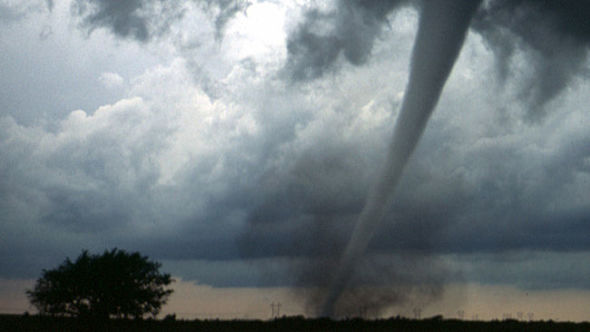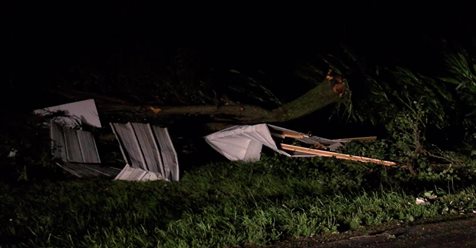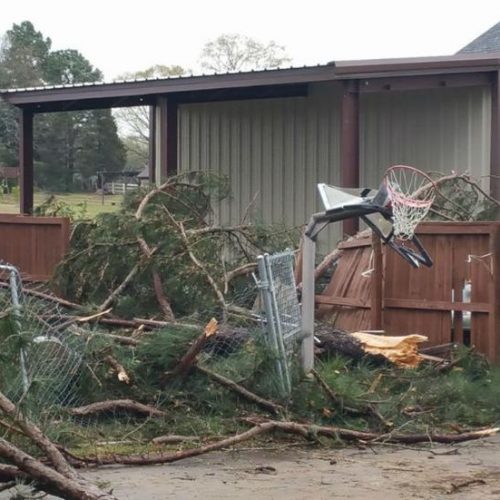Spawned by the raging interactions of powerful thunderstorms, tornadoes are some of the most awe-inspiring and destructive natural forces seen in the United States each year.
The most frequent and devastating tornado events tend to occur in the region of the U.S. colloquially referred to as Tornado Alley.
“Tornado Alley is an area of the U.S. where there is a high potential for tornado development,” AccuWeather Senior Meteorologist Dan Kottlowski said. “This area encompasses much of northern Texas northward through Oklahoma, Kansas, Missouri and parts of Louisiana, Iowa, Nebraska and eastern Colorado.”
Unlike other parts of the U.S., this region is most vulnerable to tornado development because contrasting air masses frequently collide to produce strong and violent thunderstorms, which in turn, set the stage for tornado development.
Supercells are more organized than normal thunderstorms, often exhibit strong circulation and are fueled by a volatile mixture of warm, moist air, cold air and dry air masses. The Tornado Alley region geographically favors tornado development as all the ingredients necessary for their formation often come together here.
“The dry air actually originates from the Mexican Plateau,” Kottlowski said. “As this air is guided northward just east of the southern and central Rockies, it remains elevated causing a temperature inversion over the northward-advancing moist, unstable air from the Gulf of Mexico.”
This temperature inversion puts a lid on the atmosphere, preventing it from releasing the energy produced from the rising warm, moist air. Kottlowski said a trigger is then needed to erode this inversion, allowing the warm air to rise rapidly in order to generate thunderstorms.
“That is where a strong region of upper-level winds comes into the mix,” he said.
The leading edge of strong upper-level winds causes the inversion to break up.
“If this breakup happens quickly, the moist, unstable air held at bay rapidly breaks through the collapsing inversion,” Kottlowski said. “This rapid rise in warm, moist air leads to the development of strong and severe thunderstorms, a precursor to tornado development. ”
In addition, a natural counterclockwise flow sets up just east of the Rockies as this high-level wind flow approaches allowing surface storms to form, Kottlowski said. This works together with high pressure over the eastern U.S. to create a river of deep, moist, unstable air often referred to as a low-level jet.
The original Tornado Alley isn’t the only area of the U.S. that is prone to powerful thunderstorms and tornadoes. Dixie Alley is another term often used to describe a sub-region of the original Tornado Alley region.
“Dixie Alley is a west-east oriented oval-shaped offshoot of the original Tornado Alley in the central U.S.,” Kottlowski said.
The conditions for thunderstorms capable of spawning tornadoes often combine across the Deep South. This area encompasses eastern Arkansas, much of Louisiana then eastward across Mississippi, Alabama and into parts of Georgia.
“These areas like the Plains states have a higher potential for tornado development,” Kottlowski said. “Activity leading to tornado development across Dixie Alley often originates across the original Tornado Alley.”
Tornado Alley is most active from April to June, but Kottlowski said the ingredients start to come together for activity toward late February and March.
“Daytime heating helps the process become more efficient,” Kottlowski said.
Dixie Alley is most active during the same period.
However, Dixie Alley can also become quite active during the late summer and fall. Most people who live in either the original Tornado Alley or in Dixie Alley are fully aware of the dangerous conditions that can bring damaging severe thunderstorms and tornadoes.
“Often, severe weather can occur in these geographical areas during odd times of the year like during the winter,” Kottlowski said, stating that even people living in Tornado Alley or Dixie Alley can be caught off guard at times.
“People should never underestimate the potential for tornado development in these prime areas year around,” he said.
by Michael Kuhne
March 16, 2017, 12:01:45 PM EDT





